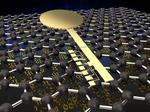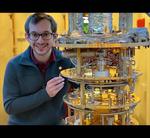Other

“As more private data is stored and shared digitally, researchers are exploring new ways to protect data against attacks from bad actors. Current silicon technology exploits microscopic differences between computing components to create secure keys, but artificial intelligence (AI) techniques …

“Known as “two-dimensional electrolytes”, these smart materials could potentially be used in many things from drug delivery to energy storage Intelligent materials, the latest revolution in the field of materials science, can adapt their properties depending on changes in their …

“Physicists at the University of Bath observe modified energy landscapes at the intersection of 2D materials. In 1884, Edwin Abbott wrote the novel Flatland: A Romance in Many Dimensions as a satire of Victorian hierarchy. He imagined a world that …

“The human brain is a vast network of billions of biological cells called Neurons which fires electrical signals that process information, resulting in our sense and thoughts. The ion channels of atomic scale in each neuron cell membrane plays a …

“Researchers at ETH Zurich have succeeded in turning specially prepared graphene flakes either into insulators or into superconductors by applying an electric voltage. This technique even works locally, meaning that in the same graphene flake regions with completely different physical …

“Work also promises new insights into superconductivity In a feat worthy of a laboratory conceived by J.K. Rowling, MIT researchers and colleagues have turned a “magic” material composed of atomically thin layers of carbon into three useful electronic devices …

“In spintronics, the magnetic moment of electrons (spin) is used to transfer and manipulate information. An ultra-compact 2D spin-logic circuitry could be built from 2D materials that can transport the spin information over long distances and also provide strong spin-polarization …
“Transparent optical sensor arrays combine with a specialized neural network in new University of Michigan prototype A new real-time, 3D motion tracking system developed at the University of Michigan combines transparent light detectors with advanced neural network methods to create …

“New technique reclaims nearly 100% of all-carbon-based transistors while retaining future functionality of the materials Engineers at Duke University have developed the world’s first fully recyclable printed electronics. By demonstrating a crucial and relatively complex computer component — the transistor …

“Graphene excels at removing contaminants from water, but it’s not yet a commercially viable use of the wonder material. That could be changing. In a recent study, University at Buffalo engineers report a new process of 3D printing graphene …
